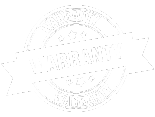When your car needs replacement parts, you're faced with a crucial decision that can impact your vehicle's performance, warranty coverage, and your wallet. The choice between OEM (Original Equipment Manufacturer) and aftermarket parts isn't always straightforward, and making the wrong decision could cost you hundreds or even thousands of dollars down the road.
Whether you're dealing with routine maintenance like brake pads and filters or major repairs involving suspension components, understanding the key differences between these options will help you make informed decisions. OEM parts are manufactured by the same companies that produced your car's original components, while aftermarket parts come from third-party manufacturers who design alternatives to fit your vehicle.
This comprehensive guide will explore the pros and cons of each option, helping you navigate factors like cost, quality, warranty implications, and long-term value. You'll discover when to choose OEM parts for critical systems and when aftermarket alternatives make perfect sense for your specific situation and budget.
Understanding OEM Parts: The Factory Standard
OEM parts represent the gold standard for vehicle repairs and maintenance. These components are manufactured by the same companies that supplied parts to your car's original assembly line, ensuring identical specifications, materials, and quality control standards. When you purchase an OEM brake rotor, engine sensor, or suspension component, you're getting the exact same part that came with your vehicle from the factory.
The manufacturing process for OEM parts follows strict quality control protocols established by the vehicle manufacturer. These parts undergo extensive testing and must meet rigorous performance standards before approval. Major automakers like Toyota, Honda, and Ford maintain detailed specifications that their OEM suppliers must follow precisely, from material composition to dimensional tolerances.
One significant advantage of OEM parts is their guaranteed compatibility with your vehicle's systems. Since these parts are designed specifically for your make and model, installation typically proceeds smoothly without modification or adjustment. This compatibility extends beyond just physical fit. OEM parts are engineered to work seamlessly with your car's electronic systems, ensuring proper communication between components and avoiding potential error codes or performance issues.
Exploring Aftermarket Parts: Innovation and Options
The aftermarket parts industry has evolved dramatically over the past two decades, offering vehicle owners an extensive range of alternatives to OEM components. These parts are manufactured by independent companies that reverse-engineer or design new solutions to fit popular vehicle models. Major aftermarket brands like Bosch, Denso, and ACDelco have established strong reputations for quality and reliability across multiple vehicle platforms.
Aftermarket manufacturers often introduce innovative improvements over original designs. For example, aftermarket brake pad manufacturers frequently develop compounds that offer better stopping power or reduced dust compared to OEM specifications. Similarly, aftermarket air filters might feature improved filtration media or reusable designs that provide long-term value for environmentally conscious consumers.
The variety available in the aftermarket sector is remarkable. While you might have only one OEM option for a specific part, aftermarket alternatives could range from budget-friendly economy versions to premium performance upgrades. This diversity allows you to choose parts that match your driving style, performance expectations, and budget constraints. Professional mechanics at Blue Ridge Automotive often help customers navigate these options based on their specific needs and vehicle usage patterns.
Cost Analysis: Breaking Down the Financial Impact
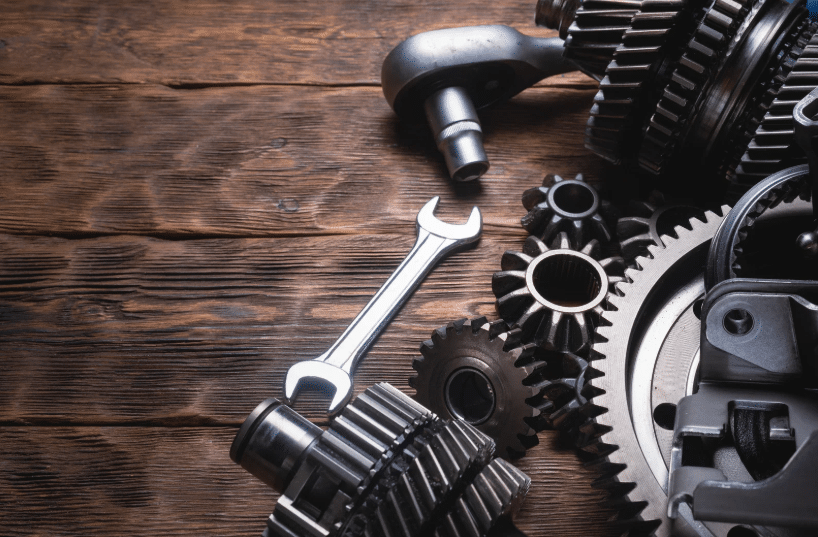
Price differences between OEM and aftermarket parts can be substantial, with aftermarket options typically costing 30-60% less than their OEM counterparts. For routine maintenance items like oil filters, air filters, and spark plugs, this cost differential can result in significant savings over your vehicle's lifetime. A complete brake job using quality aftermarket components might save you $200-400 compared to using OEM parts exclusively.
However, the initial purchase price doesn't tell the complete story. OEM parts often come with longer warranty periods and better warranty coverage terms. While an aftermarket alternator might cost $150 compared to a $300 OEM unit, the OEM part might include a three-year warranty versus one year for the aftermarket alternative. This extended coverage could prove valuable if premature failure occurs.
Labor costs represent another important consideration in your cost analysis. OEM parts typically install without complications, reducing labor time and associated costs. Aftermarket parts occasionally require modifications or additional troubleshooting, potentially increasing installation time. Experienced technicians can usually identify potential compatibility issues beforehand, but unexpected problems can add to your repair bill.
Consider the long-term ownership perspective when evaluating costs. If you plan to keep your vehicle for many years, investing in OEM parts for critical systems might provide better value through improved reliability and longevity. However, if you're maintaining an older vehicle or planning to sell soon, quality aftermarket parts often represent the most economical choice.
Quality and Performance Considerations
Quality varies significantly within both OEM and aftermarket categories, making blanket comparisons challenging. Top-tier aftermarket manufacturers often produce parts that meet or exceed OEM specifications, while some budget aftermarket options may compromise on materials or manufacturing precision to achieve lower prices. Understanding these quality differences is crucial for making informed purchasing decisions.
OEM parts benefit from extensive testing and validation processes conducted by vehicle manufacturers. These parts must pass durability tests, environmental testing, and compatibility verification before approval. For example, an OEM water pump undergoes thousands of hours of testing under various temperature and pressure conditions to ensure reliable performance throughout its expected lifespan.
Premium aftermarket manufacturers invest heavily in research and development, often producing parts that surpass original specifications. Companies like Brembo manufacture aftermarket brake components that many luxury car manufacturers choose as OEM suppliers for their high-performance vehicles. These premium aftermarket parts sometimes offer superior performance characteristics compared to standard OEM components.
The challenge lies in identifying quality aftermarket suppliers among the numerous options available. Reputable manufacturers typically provide detailed specifications, testing data, and warranty coverage comparable to OEM parts. Reading customer reviews, consulting with experienced mechanics, and choosing established brands helps ensure you receive quality aftermarket components that will provide reliable service.
Warranty Implications and Legal Protections
Vehicle warranty coverage represents a critical factor when choosing between OEM and aftermarket parts. Many vehicle owners mistakenly believe that using aftermarket parts automatically voids their manufacturer's warranty, but federal law provides important protections. The Magnuson-Moss Warranty Act prevents manufacturers from voiding warranties solely because aftermarket parts were used, unless they can prove the aftermarket part caused the specific failure.
However, warranty implications become more complex in practice. If an aftermarket water pump fails and causes engine damage, the manufacturer might deny warranty coverage for the engine repair while still covering unrelated warranty claims. Dealership service departments sometimes push back against warranty claims involving aftermarket parts, requiring additional documentation or proof that the aftermarket component didn't contribute to the failure.
Using OEM parts eliminates these warranty complications entirely. Dealerships readily accept warranty claims for repairs involving OEM components, and manufacturers cannot argue that their own parts contributed to failures. For newer vehicles still under comprehensive warranty coverage, this peace of mind often justifies the additional cost of OEM parts for major components.
Some aftermarket manufacturers offer warranty coverage that rivals or exceeds OEM protection. Premium aftermarket suppliers might provide nationwide warranty coverage through participating repair shops, making warranty claims more convenient than dealing with dealership service departments. These warranties can provide excellent protection, but understanding the terms and claim procedures is essential before making your purchase decision.
Making Strategic Decisions for Different Vehicle Systems
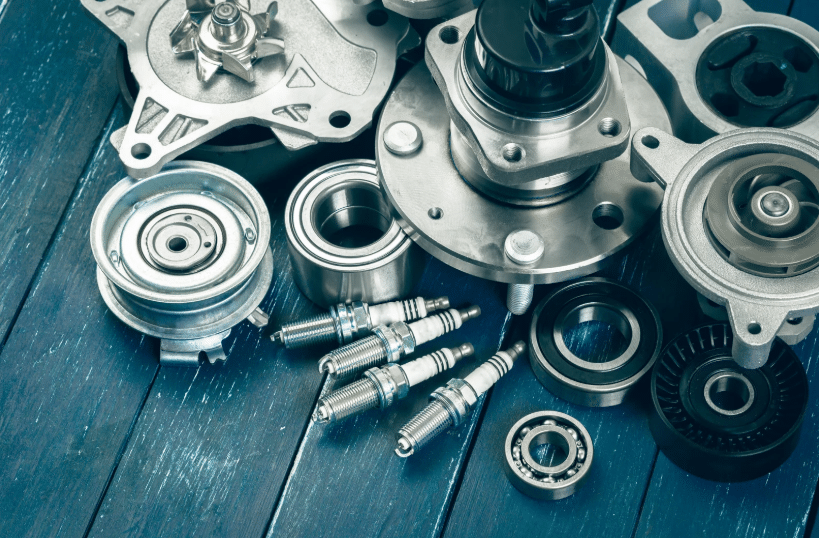
Not all vehicle systems require the same approach when choosing between OEM and aftermarket parts. Critical safety systems like brakes, airbags, and steering components deserve extra consideration due to their importance for occupant protection and vehicle control. Many safety experts recommend OEM parts for these applications to ensure complete compatibility and proven performance under emergency conditions.
Engine and transmission components represent another category where OEM parts often provide superior long-term value. These complex systems require precise tolerances and material specifications to function properly. An OEM timing belt or transmission solenoid pack undergoes extensive testing to ensure reliable operation under various conditions. While quality aftermarket alternatives exist, the consequences of failure in these systems can be severe and expensive.
For routine maintenance items and non-critical components, aftermarket parts frequently offer excellent value without compromising safety or reliability. Items like cabin air filters, windshield wipers, and exterior light bulbs are well-suited for aftermarket replacement. These components have straightforward functions and specifications that multiple manufacturers can meet successfully.
Consider your vehicle's age and mileage when making these decisions. Older vehicles with higher mileage might benefit more from cost-effective aftermarket solutions, while newer vehicles under warranty often justify OEM part selection. The team at Blue Ridge Automotive regularly helps customers evaluate these trade-offs based on their specific circumstances and long-term vehicle plans.
Real-World Case Study: Suspension System Replacement
Last year, a customer brought their 2018 Honda Accord with 85,000 miles to our shop experiencing noise and handling issues. Diagnosis revealed worn front struts and related suspension components that needed replacement. This situation perfectly illustrates the OEM versus aftermarket decision-making process for a significant repair.
The OEM replacement option included Honda-branded struts, strut mounts, and related hardware totaling approximately $1,200 in parts plus installation labor. These parts came with a three-year warranty and guaranteed perfect fit and performance matching the original specifications. For customers planning to keep their vehicle for many more years, this option provided excellent long-term value and peace of mind.
The aftermarket alternative featured Monroe Quick-Strut assemblies and quality aftermarket mounting hardware for about $600 in parts. These components included improvements like better corrosion resistance and enhanced ride comfort compared to the original equipment. The one-year warranty coverage was shorter than OEM, but the substantial cost savings made this option attractive for budget-conscious customers.
The customer ultimately chose the aftermarket solution and experienced excellent results. The installation proceeded smoothly, and the vehicle's ride quality and handling improved noticeably. This real-world example demonstrates how quality aftermarket parts can provide outstanding value when selected appropriately. Understanding these types of decisions helps vehicle owners make informed choices that match their priorities and circumstances. For more information about suspension repair costs and considerations, check out our detailed guide on suspension repair budgeting.
Environmental and Sustainability Factors
Environmental considerations increasingly influence parts selection decisions as consumers become more conscious of their ecological impact. OEM parts often come with extensive packaging and shipping requirements that can increase their environmental footprint. However, these parts typically offer longer service life, potentially reducing the frequency of replacements and associated waste.
Aftermarket manufacturers have embraced sustainability initiatives in various ways. Some companies focus on remanufacturing programs that restore used components to like-new condition, significantly reducing raw material consumption and manufacturing energy requirements. Remanufactured alternators, starters, and brake calipers often perform identically to new parts while offering substantial environmental benefits.
The packaging and distribution efficiency of aftermarket parts can also provide environmental advantages. Many aftermarket suppliers consolidate multiple part numbers in single facilities, reducing transportation requirements and packaging waste compared to OEM distribution networks that might ship parts from multiple locations worldwide.
Frequently Asked Questions
Will using aftermarket parts void my car's warranty?
No, using aftermarket parts cannot automatically void your vehicle's warranty under federal law. The Magnuson-Moss Warranty Act protects consumers from warranty denial solely based on aftermarket part usage. However, manufacturers can deny warranty coverage if they prove an aftermarket part directly caused the failure requiring warranty service. To protect yourself, keep detailed records of all parts and services, and choose quality aftermarket components from reputable manufacturers.
How can I identify quality aftermarket parts from inferior ones?
Research the manufacturer's reputation, read customer reviews, and look for certifications from organizations like ISO or SAE. Quality aftermarket parts typically come with detailed specifications, comprehensive warranties, and clear installation instructions.
Avoid parts with significantly lower prices than competitors, as extreme cost cutting often indicates compromised materials or manufacturing processes. Consulting with experienced mechanics can also help identify reliable aftermarket brands for your specific vehicle.
Are aftermarket performance parts worth the investment?
Performance aftermarket parts can provide meaningful improvements for enthusiasts, but consider your actual needs and driving habits. High-performance brake pads might benefit track day participants but offer little advantage for daily commuting while potentially increasing noise and dust.
Performance modifications can also affect warranty coverage and insurance rates. Focus on modifications that address specific performance goals rather than general upgrades that might not provide noticeable benefits for your driving style.
When should I definitely choose OEM parts over aftermarket alternatives?
Choose OEM parts for safety-critical systems like airbags, ABS components, and electronic control modules where compatibility is crucial. Newer vehicles under comprehensive warranty coverage often benefit from OEM parts to avoid potential warranty complications. Complex electronic components and emissions-related parts typically work best with OEM replacements due to their precise calibration requirements and integration with vehicle systems.
How do I find reliable sources for both OEM and aftermarket parts?
Authorized dealerships provide guaranteed OEM parts but often at higher prices. Online OEM suppliers offer competitive pricing with authenticity guarantees. For aftermarket parts, choose established retailers with good return policies and customer service. Many professional repair shops have relationships with quality parts suppliers and can source both OEM and aftermarket options at competitive prices while providing installation expertise and warranty support.
Make the Smart Choice for Your Car's Future Today!
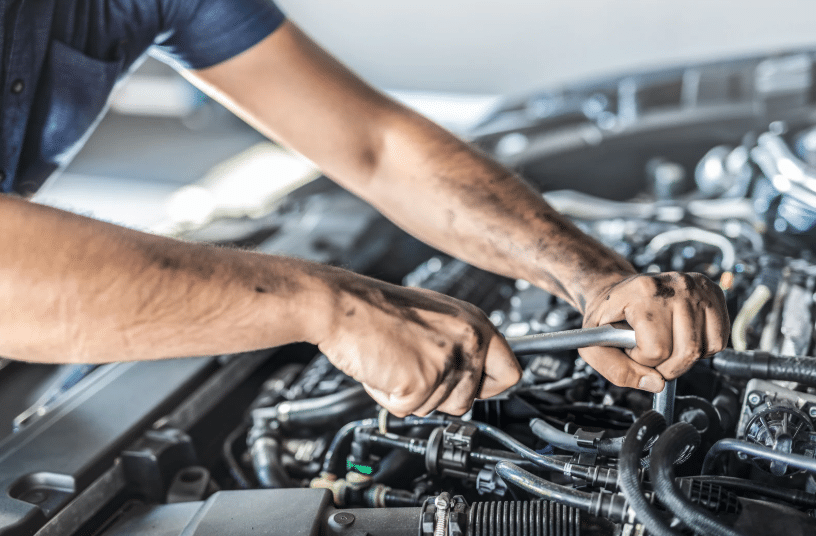
Choosing between OEM and aftermarket parts requires careful consideration of your specific situation, including vehicle age, warranty status, budget constraints, and long-term ownership plans. While OEM parts offer guaranteed compatibility and comprehensive warranty coverage, quality aftermarket alternatives can provide excellent value and sometimes superior performance characteristics.
The key lies in making informed decisions based on each component's importance to safety and vehicle function. Consider consulting with experienced automotive professionals like Blue Ridge Automotive who can help evaluate your options and recommend the best approach for your specific needs and circumstances.
About Blue Ridge Automotive
Blue Ridge Automotive specializes in comprehensive automotive repair and maintenance services with years of experience serving vehicle owners throughout the region. We provide expert automotive services including engine diagnostics, brake system repair, suspension work, and preventive maintenance programs. Our team of ASE-certified technicians combines technical expertise with industry knowledge to deliver reliable repairs using both OEM and quality aftermarket components.
We pride ourselves on transparent communication and honest recommendations, helping customers make informed decisions about parts selection based on their specific needs and budgets. Our facility features state-of-the-art diagnostic equipment and maintains relationships with trusted OEM and aftermarket suppliers to ensure competitive pricing and reliable parts availability. We have helped thousands of customers maintain their vehicles safely and economically while extending their operational life through proper maintenance and quality repairs.
Contact Blue Ridge Automotive today at (404) 266-1699 to discuss how our automotive expertise can help you make the right parts choices for your vehicle. Schedule a consultation to learn more about our comprehensive repair services and how we've helped clients achieve reliable, cost-effective vehicle maintenance solutions.
Your check engine light just came on, and after a diagnostic scan, you've learned that your oxygen sensor needs replacement. If you're like most car owners, your first question is probably about cost. O2 sensor replacement is one of the most common automotive repairs, but the price can vary significantly depending on your vehicle type, sensor location, and where you choose to have the work done.
Oxygen sensors play a crucial role in your vehicle's emissions system and fuel efficiency. When they fail, you'll likely notice decreased gas mileage, rough idling, or that dreaded check engine light. Understanding the costs involved in O2 sensor replacement can help you budget appropriately and make informed decisions about your vehicle's maintenance.
In this comprehensive guide, we'll break down everything you need to know about O2 sensor replacement costs in 2025, including factors that influence pricing, what to expect during the repair process, and tips for saving money. Whether you're dealing with a single sensor failure or multiple sensor issues, this information will help you navigate the repair process with confidence.
Understanding O2 Sensor Function and Importance
Oxygen sensors monitor the amount of oxygen in your vehicle's exhaust gases, sending this information to your car's computer system. This data helps the engine control unit adjust the air-fuel mixture for optimal performance and emissions control. Most modern vehicles have between two and four oxygen sensors, depending on the engine configuration and emissions requirements.
When an O2 sensor fails, your vehicle's computer can't properly regulate the fuel mixture, leading to increased emissions and reduced fuel economy. In some cases, a faulty oxygen sensor can cause your vehicle to fail emissions testing, preventing you from renewing your registration. The sensor typically fails due to contamination from engine oil, coolant, or fuel additives, or simply from normal wear over time.
The location of your O2 sensors affects both their function and replacement cost. Pre-catalytic converter sensors (upstream) monitor exhaust gases before they enter the catalytic converter, while post-catalytic converter sensors (downstream) measure the converter's efficiency. Upstream sensors are generally more expensive to replace due to their location and the additional labor required for access.
Average O2 Sensor Replacement Costs in 2025
The total cost for O2 sensor replacement typically ranges from $200 to $500 per sensor, including parts and labor. However, this range can vary significantly based on several factors. For a standard passenger car, you can expect to pay between $250 and $350 for a single sensor replacement at most repair shops.
Parts costs alone range from $50 to $200 per sensor, depending on your vehicle's make, model, and year. Original Equipment Manufacturer (OEM) sensors cost more than aftermarket alternatives but often provide better longevity and performance. Labor costs typically add another $100 to $300 to the total bill, depending on sensor accessibility and your local market's labor rates.
Luxury vehicles and import models often require more expensive sensors and may have higher labor costs due to complexity. For example, a BMW or Mercedes-Benz might require sensors costing $150 to $300 each, while a Honda or Toyota might need sensors in the $60 to $120 range. Blue Ridge Automotive specializes in working with various vehicle makes and models, helping customers understand the specific requirements for their particular vehicle.
Factors That Influence Replacement Costs
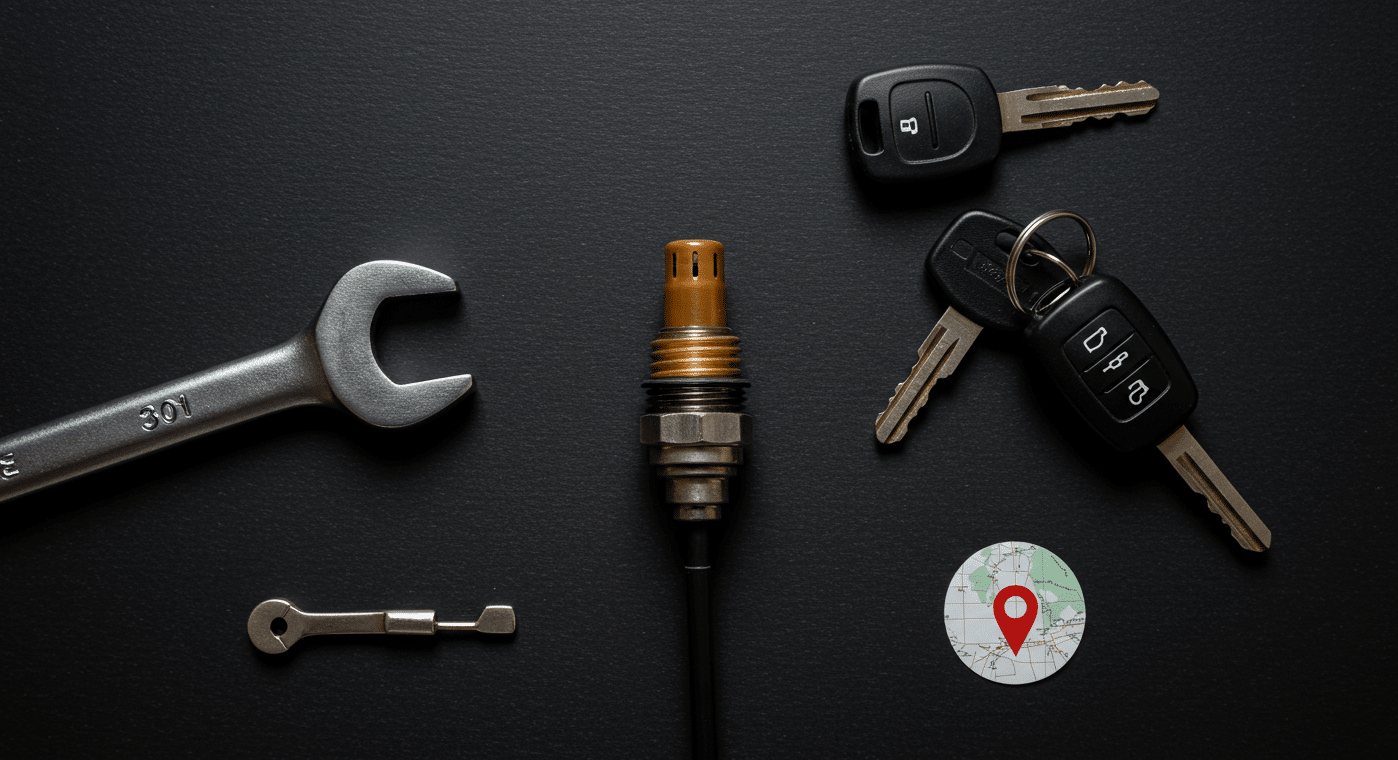
Several key factors determine how much you'll pay for O2 sensor replacement. Vehicle age and mileage play significant roles, as older vehicles may require additional repairs or have sensors that are more difficult to access. High-mileage vehicles might also have corroded exhaust components that complicate the replacement process.
The sensor's location within your exhaust system dramatically affects labor costs. Upstream sensors located near the engine are often easier to access, while downstream sensors positioned after the catalytic converter may require lifting the vehicle and removing heat shields or other components. Some sensors are located in particularly tight spaces that require special tools or additional disassembly.
Your choice of replacement parts also impacts the total cost. While aftermarket sensors can save money upfront, OEM sensors typically last longer and may prevent future diagnostic issues. Some vehicles are particularly sensitive to sensor quality, making OEM parts worth the additional investment. Additionally, if multiple sensors need replacement simultaneously, some shops offer package pricing that can reduce the per-sensor cost.
Geographic location affects pricing as well. Urban areas with higher labor rates will typically cost more than rural locations. Dealerships generally charge premium prices compared to independent shops, but they guarantee OEM parts and have specialized knowledge of your vehicle's systems.
Signs Your O2 Sensor Needs Replacement
Recognizing the symptoms of a failing oxygen sensor can help you address the issue before it causes additional problems. The most obvious sign is an illuminated check engine light, but this generic warning doesn't specify the exact issue. A diagnostic scan is necessary to identify which sensor has failed and whether other related problems exist.
Poor fuel economy is often the first noticeable symptom of O2 sensor failure. When sensors can't properly monitor exhaust gases, your engine's computer defaults to a "rich" fuel mixture, increasing consumption by 10-20%. You might also notice rough idling, hesitation during acceleration, or black smoke from the exhaust pipe.
Failed emissions testing is another clear indicator of sensor problems. Most states require vehicles to pass emissions tests for registration renewal, and faulty O2 sensors will typically cause test failure. Additionally, you might smell sulfur or rotten eggs from the exhaust, indicating that the catalytic converter isn't functioning properly due to incorrect sensor readings.
Long-term driving with faulty O2 sensors can damage your catalytic converter, which is a much more expensive repair. Catalytic converter replacement can cost $1,000 to $3,000 or more, making prompt O2 sensor replacement a wise investment. Understanding these warning signs can help you avoid more costly repairs down the road, similar to how proper suspension maintenance prevents more expensive component failures.
DIY vs Professional Installation
Some mechanically inclined car owners consider replacing O2 sensors themselves to save money. The sensors themselves aren't particularly complex, but the installation process can be challenging depending on their location and your vehicle's design. Basic hand tools and a specialized O2 sensor socket are typically required for the job.
DIY replacement can save $100 to $300 in labor costs, but several factors should be considered before attempting this repair. Sensors are often installed in tight spaces where access is limited, and they may be seized in place due to heat and corrosion. Additionally, some vehicles require specific procedures for sensor initialization after installation.
Professional installation offers several advantages beyond convenience. Experienced technicians can quickly identify related problems, ensure proper sensor calibration, and provide warranties on their work. They also have specialized tools and lifts that make the job safer and more efficient. For most car owners, professional installation provides better value when considering time, tools, and potential complications.
One satisfied customer shared their experience: "I initially planned to replace my Subaru's O2 sensors myself but decided to have professionals handle it after researching the process. The technicians discovered that my exhaust manifold had hairline cracks that were affecting sensor performance. Getting everything fixed properly the first time saved me from ongoing problems and additional costs."
Cost-Saving Tips for O2 Sensor Replacement
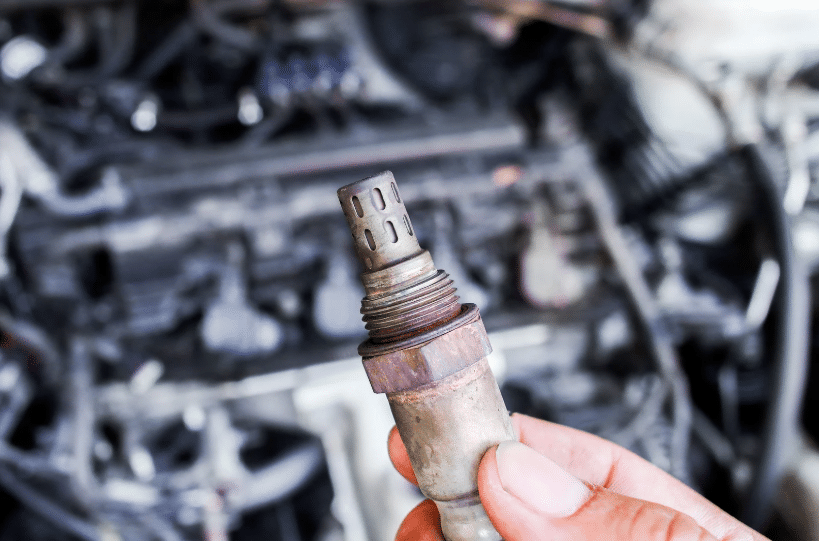
Several strategies can help reduce your O2 sensor replacement costs without compromising quality. First, get quotes from multiple repair shops to compare pricing. Independent shops often charge less than dealerships while still providing quality service. However, ensure that any shop you choose has experience with your vehicle's make and has proper diagnostic equipment.
Consider timing your repair strategically. Some shops offer discounts during slower periods or may have seasonal promotions. If multiple sensors need replacement, having them all done simultaneously can sometimes reduce the per-sensor labor cost. Additionally, ask about warranty coverage for both parts and labor to protect your investment.
When selecting replacement sensors, balance cost and quality carefully. While OEM sensors cost more initially, they often last longer and perform better than cheap aftermarket alternatives. Mid-range aftermarket sensors from reputable manufacturers can provide good value, offering better performance than budget options without OEM pricing.
Preventive maintenance can also help extend O2 sensor life and avoid premature failure. Regular oil changes with high-quality oil reduce sensor contamination, while using quality fuel and avoiding fuel additives that aren't recommended by your vehicle manufacturer can prevent sensor damage. Just as proper transmission fluid maintenance protects expensive transmission components, good engine maintenance protects your emissions system.
When to Replace Multiple Sensors
Many vehicles have multiple oxygen sensors, and deciding whether to replace them all at once or individually requires careful consideration. If your vehicle has high mileage and one sensor has failed, others may be approaching the end of their useful life. Replacing multiple sensors simultaneously can reduce labor costs and prevent future diagnostic fees.
However, O2 sensors don't always fail at the same rate. Upstream sensors typically work harder and may fail sooner than downstream sensors. Vehicle history also matters - if sensors were replaced at different times, they'll likely fail at different intervals. A diagnostic scan can provide information about all sensor performance levels, helping guide replacement decisions.
Some repair shops offer package pricing for multiple sensor replacement, which can provide significant savings. For example, replacing four sensors individually might cost $1,200 to $1,600, while a package deal might reduce the total to $900 to $1,200. Consider your vehicle's age, mileage, and your long-term ownership plans when making this decision.
Frequently Asked Questions
How long do oxygen sensors typically last?
Most oxygen sensors last between 60,000 and 90,000 miles under normal driving conditions. However, factors like fuel quality, driving habits, and engine maintenance can significantly impact sensor lifespan. Vehicles used primarily for short trips or stop-and-go driving may experience shorter sensor life due to incomplete combustion cycles and increased contamination.
Can I drive with a bad O2 sensor?
While you can technically drive with a faulty oxygen sensor, it's not recommended for extended periods. Your vehicle will likely experience reduced fuel economy, increased emissions, and potential catalytic converter damage. Most states also require functioning emissions systems for vehicle registration, so repairs may be necessary for legal compliance.
Are aftermarket O2 sensors reliable?
Quality aftermarket sensors can provide reliable service, but performance varies significantly between manufacturers. Premium aftermarket brands often perform nearly as well as OEM sensors at lower cost, while budget options may have shorter lifespans or compatibility issues. Research specific brands and read reviews before choosing aftermarket alternatives.
How can I tell which O2 sensor is failing?
A diagnostic scan is necessary to identify the specific failing sensor, as each sensor has a unique code in your vehicle's computer system. Symptoms alone can't pinpoint which sensor has failed, especially in vehicles with multiple sensors. Professional diagnosis ensures the correct sensor is replaced and identifies any related issues.
Will a bad O2 sensor cause my car to fail inspection?
Yes, a failed oxygen sensor will typically cause your vehicle to fail emissions testing in states that require it. The check engine light alone is often an automatic failure, regardless of the underlying cause. Additionally, the sensor failure itself will likely result in emissions levels that exceed acceptable limits during testing.
Make the Right Decision for Your Vehicle Today!
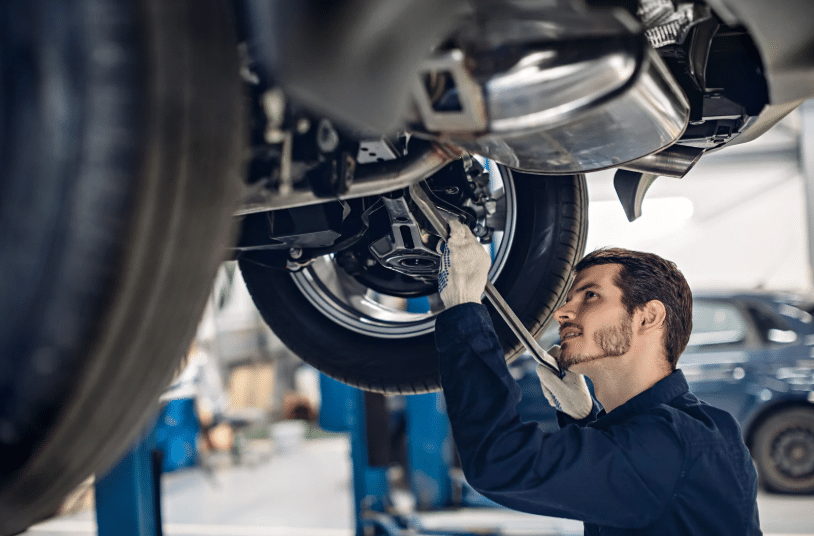
O2 sensor replacement is a necessary maintenance item that shouldn't be delayed once problems are identified. While costs can vary significantly based on your vehicle and local market conditions, understanding the factors that influence pricing helps you make informed decisions. Remember that prompt replacement prevents more expensive repairs and maintains your vehicle's performance and efficiency.
When choosing a repair facility, prioritize experience and reputation over the lowest price. Quality installation with appropriate parts provides better long-term value than bargain repairs that may require repeat service. Consider your vehicle's age, condition, and your ownership plans when deciding between repair options.
For professional service and expert advice on your specific vehicle needs, Blue Ridge Automotive provides comprehensive diagnostic and repair services to keep your vehicle running efficiently and meeting emissions standards.
About Blue Ridge Automotive
Blue Ridge Automotive specializes in comprehensive automotive repair and maintenance services with years of experience serving drivers throughout the region. We provide expert diagnostic and repair services for all vehicle emissions systems, including oxygen sensor replacement, catalytic converter repair, and check engine light diagnosis. Our team of ASE-certified technicians combines advanced diagnostic equipment with extensive knowledge of both domestic and import vehicles to deliver reliable, cost-effective solutions.
We understand that emissions system repairs can be frustrating and expensive, which is why we focus on accurate diagnosis and transparent pricing. Our services include complete emissions system evaluation, OEM and premium aftermarket parts installation, and comprehensive warranty coverage on all repairs. We've helped thousands of customers resolve emissions issues, pass state inspections, and improve their vehicles' fuel economy and performance.
Contact Blue Ridge Automotive today at (404) 266-1699 to discuss how our automotive expertise can help you resolve your emissions system concerns efficiently and affordably. Schedule a consultation to learn more about our diagnostic services and how we've helped clients maintain their vehicles' performance while meeting environmental standards.


